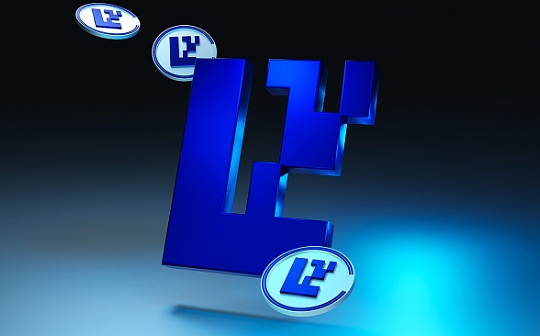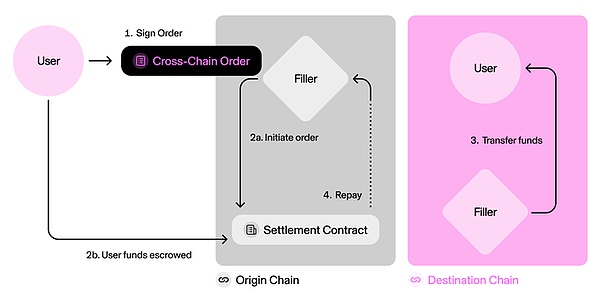
In the multi-chain pattern of blockchain world, how to achieve safer and more convenient cross-chain interoperability has always been a challenging issue.With the increase in the demand for cross-chain transactions of blockchain users, the challenges faced during cross-chain interoperability are becoming more prominent.Common challenges include:
■Security
Security is the most common challenge in cross-chain transactions, and cross-chain bridge protocols that can attract large-scale assets to stay are the primary target of hacker attacks in recent years.
Blockchain relies on verifiers to verify and execute transactions, and cross-chain bridge protocols also need to rely on trusted third-party verifiers to verify and handle cross-chain transactions.In this process, if the incentives for cross-chain bridges are insufficient, the number of validators is small, or the trust model is too centralized, hackers may compromise cross-chain bridges by attacking validators, thereby stealing assets.In addition, the contract vulnerabilities of the cross-chain protocol itself often become the entrance for hackers to launch attacks.
On the afternoon of August 6, 2024, Ronin Bridge was suspected to have been hacked and stolen about 4,000 ETH and 2 million USDC, with a loss of about $12 million.In March 2022, Ronin Bridge had already had a security incident known as the “largest loss in DeFi history”. Hackers attacked 5 of the 9 validators, stealing a total of 173,600 Ethereum and valueUSD 25 million USD, with a total value of more than USD 600 million.
■ Gas is expensive
Cross-chain transactions will relatively incur higher Gas fees.Because the user needs to calculate the actual transaction cost based on the Gas fees paid for operations performed on the two chains before and after the chain.
■ Complexity
Each blockchain is an independent chain, and each blockchain network has its own consensus mechanism and protocol.This scattered and isolated state between chains will lead to relatively complex and cumbersome operations required for users to transfer assets and data across chains.In cross-chain transactions, users with frequent trading needs are more likely to encounter asset price slippage, increasing transaction difficulty.
In response to the above issues, Uniswap Labs and the interoperability protocol Across jointly proposed aNew standard solution ERC-7683, aimed atThrough shared execution network, cross-chain transactions are simpler, faster and safer.
ERC-7683
The ERC-7683 standard is created based on the CrossChainOrder structure and will provide an ISettlementContract smart contract interface that allows the implementation of standard APIs for cross-chain transaction execution systems.
The core technical proposals of the ERC-7683 standard are:All “cross-chain intent” follow the same order structure, This method can greatly improve the flexibility and user-friendliness of cross-chain operations.
As Uniswap Labs shows on its social platform X:The ERC-7683 standard provides a clear path to unifying Ethereum.

△ Figure 1: Schematic diagram of cross-chain order structure under the ERC-7683 standard
Source: Uniswap Labs
Current development and application status
On August 21, 2024, Optimism, the Layer 2 solution, announced the adoption of the ERC-7683 cross-chain standard, aiming to achieve more efficient transfer operations on ETH and USDC on Superchain and further promote application-layer interoperability for the wider Ethereum ecosystem.sex.Currently, Optimism has integrated the cross-chain solution of the interoperability protocol Across.
In May 2024, Uniswap Labs stated that it would adopt the standard when it cooperates with UniswapX across chains.
It is worth noting that since the ERC-7683 standard only implements standard API for cross-chain transaction execution systems, that is, implementing standards on the entry can ensure the consistency of user experience, but even if ERC-7683 is implemented, it is difficult to avoid cross-chain transactions.Challenge:Can you obtain sufficient cross-chain liquidity?
For the implementation of the ERC-7683 standard, if the cross-chain liquidity is insufficient, it means that it is difficult for the standard to obtain enough active “Fillers” (reference Figure 1 in the text) to support the user’s “cross-chain intentions”.If there are not enough “Fillers”, users’ “cross-chain intentions” cannot obtain better costs or better experience through competition mechanisms.
This means that the implementation of the ERC-7683 standard needs to form a wide-area effect – more use case access standards and more users use standards will have more Fillers, and ultimately improve the overall efficiency of cross-chain transactions.
▶ Learn more about ERC-7683
Please check:https://www.erc7683.org
▶ View the Ethereum Comment Request for Uniswap Labs and Across jointly released to the Ethereum Magicians forum
Please check:https://ethereum-magicians.org/t/erc-7683-cross-chain-intents-standard/19619
Support from the founder of Ethereum
Public media reports point out that Ethereum co-founder Vitalik Buterin is through social platformsSpecial support for the development of the new cross-chain transaction standard ERC-7683, noting that operations performed under the ERC-7683 standard can include batch transactions, Merkle proofs, and other on-chain activities, and illustrate how the ERC-7683 standard will work, he said:
“With the ERC-7683 standard, users can paste an ERC-7683 address into their wallet and then easily transfer assets on any chain to another account with just one click.”
The multi-chain pattern is inevitable in the development of the Web3 era. For the next step in the development of the Web3 world, whether cross-chain transactions can be optimized, simplified, and further released liquidity will be a very critical challenge.The ERC-7683 standard directly hits the pain points of cross-chain transactions and can significantly improve interoperability between blockchains. Its application will have a profound impact on the blockchain world.At present, users can expect that the improvement in user experience brought by applying the ERC-7683 standard can bring direct benefits to more DeFi projects – injecting more liquidity support and accelerate development.








